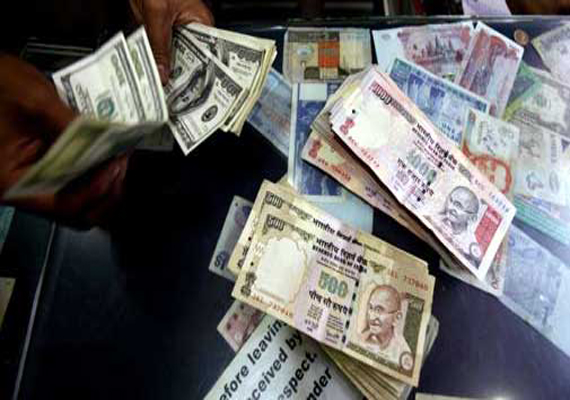India’s foreign exchange reserves have emerged as a topic of significant interest and discussion in recent times. These reserves play a crucial role in maintaining the country’s economic stability and resilience.

Image: www.indiatvnews.com
They serve as a buffer against external shocks, such as global economic downturns or currency fluctuations. In this article, we will delve into the details of India’s forex reserves, comparing them to those of other major countries and highlighting their importance.
Global Comparison of Forex Reserves
As of July 2023, India’s foreign exchange reserves stood at approximately $613 billion, making it the fourth largest holder of forex reserves globally, behind China, Japan, and Switzerland.
Over the past decade, India’s forex reserves have grown steadily, reflecting the country’s strong economic growth and increased integration into the global economy. This growth has been supported by factors such as rising foreign direct investment, a resilient export sector, and prudent macroeconomic management.
Importance of Forex Reserves
Forex reserves hold immense significance for India’s economy, serving several key purposes:
- Balance of Payments Support: Forex reserves help bridge the gap between foreign exchange inflows and outflows, ensuring that India can meet its international payment obligations and maintain a stable balance of payments.
- Currency Stabilization: Forex reserves allow the Reserve Bank of India (RBI) to intervene in the foreign exchange market to stabilize the rupee’s exchange rate, preventing excessive volatility and protecting the economy from external shocks.
- Contingency Fund: Forex reserves provide a buffer against external economic shocks or crises, such as sudden capital outflows or natural disasters. They can be used to finance essential imports or support the government’s budget in times of need.
- Global Investment: Forex reserves can be used to invest in foreign assets, such as bonds or equities, which generates returns for the country and contributes to its overall economic growth.
Latest Trends and Developments
In recent years, the global economic landscape has witnessed significant shifts, prompting central banks worldwide to reassess their forex reserve management strategies. The COVID-19 pandemic, for instance, led to unprecedented capital outflows and a decline in forex reserves across many countries.
However, India’s forex reserves have remained relatively resilient during this period, buoyed by a combination of factors, including robust inflows from foreign direct investment, remittances, and a proactive monetary policy stance by the RBI.

Image: ticacoqaxise.web.fc2.com
Tips for Effective Forex Reserve Management
Effective management of forex reserves requires a combination of prudent macroeconomic policies, sound investment strategies, and forward-looking risk assessment. Here are some key tips for policymakers:
- Monetary Stability: Maintain a stable and flexible monetary policy framework, as it helps attract foreign capital and stabilize the exchange rate, contributing to the growth of forex reserves.
- Fiscal Discipline: Implement sound fiscal policies, characterized by budget prudence and low fiscal deficits, as they enhance investor confidence and support the accumulation of forex reserves.
- Diversification: Diversify forex reserve holdings across a range of currencies and assets, such as gold, to minimize risks associated with currency fluctuations or market downturns.
- Investment Management: Develop a systematic and transparent framework for investing forex reserves, ensuring a prudent and balanced approach that generates steady returns while preserving capital.
FAQs on Forex Reserves
Q: How do forex reserves affect the economy?
A: Forex reserves play a vital role in stabilizing the exchange rate, supporting international trade, and providing a buffer against external shocks, ultimately contributing to economic stability and growth.
Q: What are the risks associated with forex reserve management?
A: Key risks include currency fluctuations, interest rate changes, geopolitical uncertainties, and capital outflows. Effective risk management strategies are essential to mitigate these risks.
Q: How does India compare to other countries in terms of forex reserves?
A: India ranks fourth globally in terms of forex reserves, behind China, Japan, and Switzerland, highlighting the country’s strong economic fundamentals and global financial standing.
Indian Forex Reserves Vs Other Countries
Conclusion
India’s forex reserves are a critical component of the country’s economic resilience and financial stability. Their growth over the past decade reflects India’s growing economic clout and integration into the global economy. Prudent management of these reserves is essential to maintain economic stability, support international trade, and mitigate external risks.
By leveraging its forex reserves strategically, India can continue to foster economic growth, attract foreign investment, and enhance its position as a global economic powerhouse. Are you interested in learning more about India’s forex reserves and their role in the country’s economic development?






